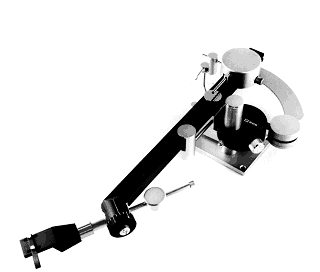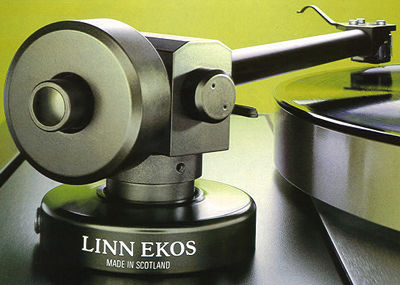Linn had a problem by 1979, however it was a pleasant thing to have. The problem was that while the £298 Sondek LP12 turntable was flying off the shelves, not everyone could afford the company’s new Ittok LV II tonearm, which retailed for £253. Instead, a major portion of sales went to Rega, whose £46 Acos-derived R200 arm performed admirably in the Sondek. The Glasgow business, understandably, felt it had missed a trick and flew to Tokyo to negotiate a deal for a Linn-badged tonearm.
The result was the Basik LV V, a £50 S-shaped design with a Linn Basik cartridge as standard – practically an Audio Technica AT-93E with a glued-in stylus! Of course, the mags gushed over it, but it wasn’t quite as wonderful as the Rega R200, and the R200 wasn’t quite as excellent as it should have been for an LP12. Linn required a turbo-charged Basik LV V, something that wasn’t as hazy and flat-sounding but was still very affordable and felt slightly nicer to operate.
This was the outcome. The first LV X was released in 1984, and it cost £96 in the UK, including the cartridge. It was essentially a re-tubed LV V with improved bearings and a (then fashionable) long and thin satin black-painted alloy armtube. It was strangely similar to the ADC ALT1 clone installed to the ADC 1700 turntable, without the ‘ultra low mass’ fixtures and fittings (i.e. the counterweight, etc.), yet it was supposedly built to Linn specifications.
The LV X was a decent little arm, but that was about it. It was never spectacular, but I bought it because it sounded a little tighter and more detailed, with somewhat more solid and tuneful bass. The Linn’s difficulty was, of course, the Rega RB300, which debuted in the summer of 1983 and was so superior to similarly priced (£90 retail price) designs that it rendered them all obsolete. This was also true of the Basik LV X, so Linn responded by introducing the LV X+ version, which for an extra £15 removed the detachable headshell (presumably making it cheaper?) and improved the wiring. The Basik LV X+ was slightly tighter and more concentrated than its predecessor, with slightly more detail and a slightly more expansive treble, although the differences were minor.
The most you can say about them these days is that they’re good beginner arms. The bearings are delicate, and most of them will have been jiggered by now, so look for evidence of play and friction. The good news is that there are a lot of these available – many were also installed to the first generation of Linn Axis turntables, boosting their ubiquity even more – and they came with mid-price motor units in the early 1980s, such as the Systemdek II. Don’t expect miracles if you spend more than £150 on a minter; a well-preserved RB300 sounds better and is far more tweakable.







